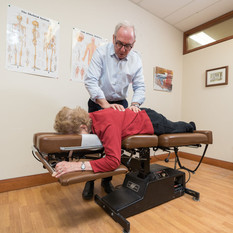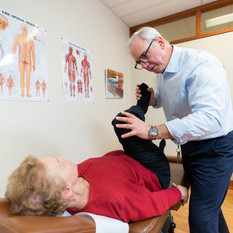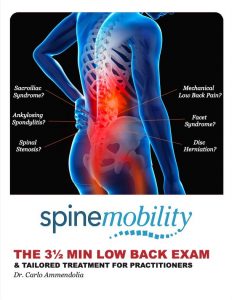
Spinemobililty Newsletter – February 2022
Hello and welcome to our newsletter where we update our subscribers on the latest in the world of Spinemobility!
Our most recent publication, authored by Dr. Carlo Ammendolia and colleagues, was published in the British Medical Journal (Open Access) in January 2022. This review is the most up-to-date and comprehensive review of nonoperative treatments for lumbar spinal stenosis.
The review concluded that:
In June 2021, The British Medical Journal Clinical Updates recommended conservative treatment, which includes supervised exercise and manual therapy as a first-line treatment for lumbar spinal stenosis.
Two of the three clinical trials from which this recommendation is based came from the studies evaluating the Boot Camp Program for lumbar spinal stenosis.
See link below for full paper:
In October 2021, Dr. Carlo Ammendolia of the University of Toronto was given the designation of “World Expert” in the field of spinal stenosis by Expertscape. He placed in the top 0.1% of scholars writing about Spinal Stenosis over the past 10 years.
See link below:
This 3 1/2 minute low back exam & tailored treatment course provides detailed instruction on what relevant tests should be performed and how to correctly perform and interpret the tests and how to use test findings to tailor a treatment program. The course includes a low back exam form that can be used to guide the exam and to record exam findings. A template for conducting a thorough low back pain history is included with accompanying screening tools for assessing red and yellow flags.
The course will outline how to diagnose or classify low back pain patients based on the clinical pattern, physical and functional exam findings, and psychosocial risk assessment (yellow flags). An easy-to-use clinical algorithm and summary chart is provided which matches each low back pain diagnosis or classification to a specific recommended treatment protocol that addresses symptoms and underlying physical and functional impairments and psychosocial barriers. Delivering a tailored treatment aimed at specific clinical, physical, functional, and psychosocial findings can significantly improve patient outcomes, both in the short and long term.
See our latest Blog on lumbar spinal stenosis for the public and practitioners:




